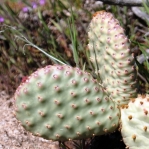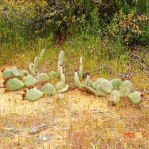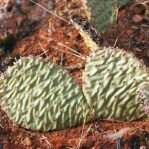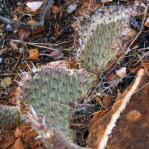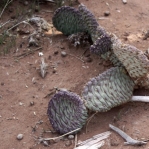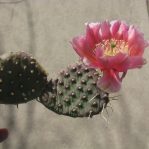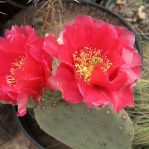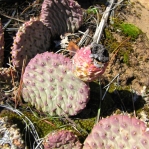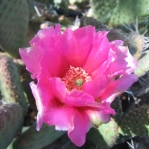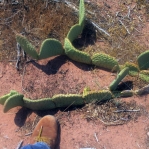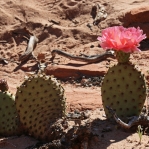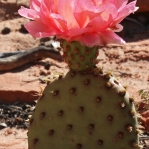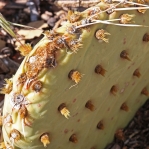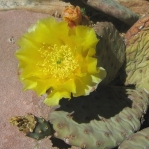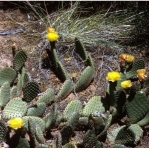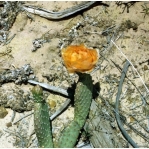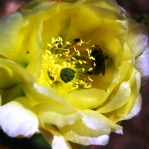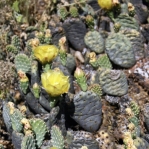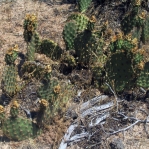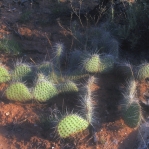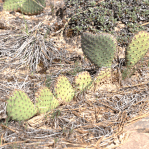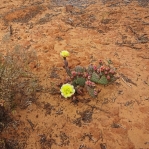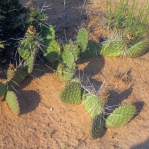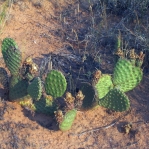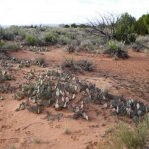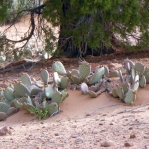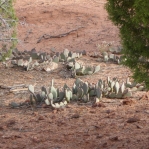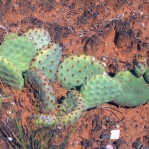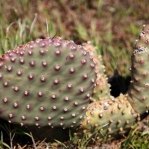
Baxter, Cactus and Succulent Journal (U.S.) 5(6): 489, 1933
Holotype; Herbarium; Herbarium; Herbarium; Herbarium; Herbarium; Herbarium; Herbarium; Herbarium; Herbarium; Herbarium; Herbarium; Herbarium; Herbarium
Original Description
What is Opuntia aurea?
Opuntia aurea is a prickly pear cactus that grows in southern UT and northern AZ. It is prostrate and forms irregularly sprawling plants to about 1 m across. A single pad may grow upright now and then.
Details
The cladodes are often oval but may also be broadly obovate up to 10(15) cm long. Cladodes have a thick look and they may become pink or purple in winter. Areoles on this Opuntia may be slightly sunken. O. aurea may be spineless or may have a few spines to multiple spines. Spines may be in the distal areoles only or on the faces of the cladode too. Excessively spiny plants may represent introgression from adjacent species.
Flowers are pale-yellow, yellow, apricot-pink, and even strongly pink. Seeds are often circular and up to 7-8 mm in diameter or a bit more; arils may be 1-2 mm. Fruits of this prickly pear typically have no spines, but there may sometimes be one or more at the apex. Fruit is dry at maturity.
O. aurea is hexaploid.
Other notes.
Because many plants are without spines, and because the areoles may be sunken, the plant was considered to be closely related to O. basilaris at one time. But, the two are rather different. Perhaps O. aurea has an O. basilaris-type plant in its background.
O. aurea is a beautiful garden plant and does not become too large if modestly trimmed. Some forms are nicely cold-hardy. Flowers may be yellow, apricot, pink, and magenta. Some forms turn strongly red-purple in the winter.
Special thanks to the Cactus and Succulent Society Journal for permission to reproduce the original description.


